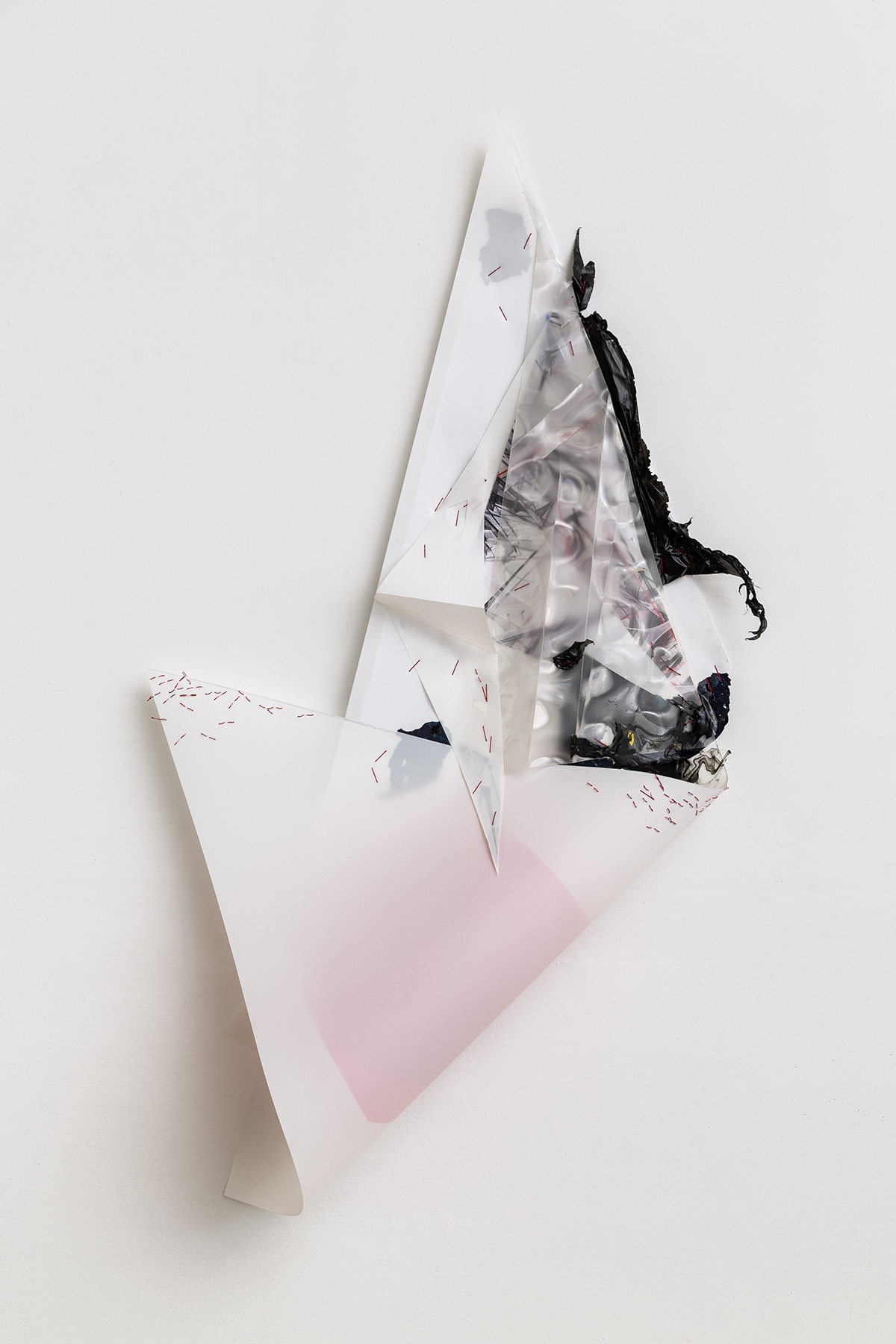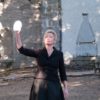We are honoured to share with you new experimental works by Gelah Penn. The American artist is known for expanding the language of drawing in sculptural space, using an accumulation of disparate synthetic materials. Her works consist of layers of transparent and opaque forms, sometimes performed only in low key black and white, sometimes with a subtle use of colours.
In site-responsive installations, Penn deploys a variety of synthetic materials “to invade, interpret and confound the architectural parameters of a given space.” The works in her Polyglot drawing series also “foreground the same internal formal and conceptual contradictions: cohesion and fragmentation, balance and vertigo, minuet and jitterbug. Areas of visual commotion impinge on the paper’s edge and transpose these investigations into folded, punctured, torn and layered zones of marks.”
Penn sometimes incorporates photographic images of installation details, “thus cannibalizing and reformulating my concerns from one medium to another. My great interest in film, particularly the uneasy territory of film noir, informs the work.”
Gelah Penn’s aim is to “choreograph events of perceptual incident and psychological dis-ease. My hope is that this conflation of disparate parts—mark, shadow, geometry, gesture, concord, dissonance—results in some sort of vertiginous whole.”
In a recent essay on Penn’s work in Peripheral Vision Press, Scott Gleeson says the artist’s installations often assume panoramic formats that extend beyond the viewer’s field of vision. These works require the viewer to move, and they reward bodily movement through space by transforming it into an act of discovery as each compositional element is revealed. In their formal structure, some appear indebted as much to the genre of cinema as to that of landscape painting, while others resist this comparison because they break free of the gridded, filmic horizontality, instead appearing as fungus colonizing Modernist and Georgian architectural spaces. Ultimately, Penn interrogates our relationship to and experience of built Spaces.




